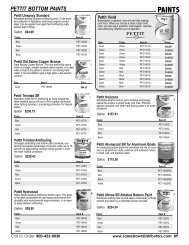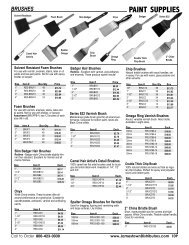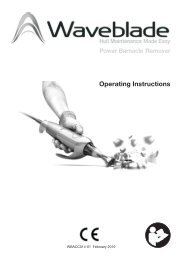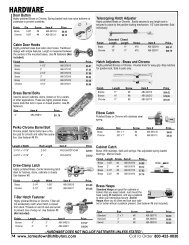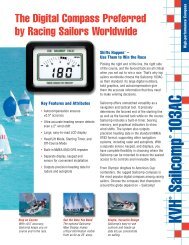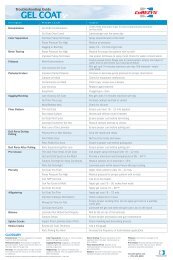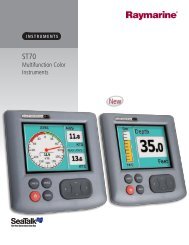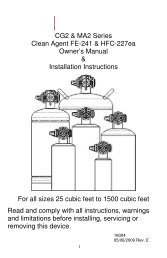technical manu al table of contents - Jamestown Distributors
technical manu al table of contents - Jamestown Distributors
technical manu al table of contents - Jamestown Distributors
Create successful ePaper yourself
Turn your PDF publications into a flip-book with our unique Google optimized e-Paper software.
Question:<br />
What is the best way to remove old finish?<br />
Answer:<br />
There is no right way or wrong way to strip varnish. Whatever works for you, is the best<br />
way. Our recommendations are based on our own experiences and preferences.<br />
First, begin with a good (6 or more. You can't have too many) selection <strong>of</strong> scrapers. Go<br />
nuts, experiment with a variety <strong>of</strong> styles, brands, and shapes. These should be treated<br />
as tools. That is what they are. Learn how to sharpen them. We cannot emphasize<br />
enough the v<strong>al</strong>ue <strong>of</strong> a sharp scraper. Books should be written on this subject. If you want<br />
to know more, ask us.<br />
Next, experiment with stripping methods. There are a vast number <strong>of</strong> chemic<strong>al</strong>s out<br />
there to choose from. We do not use chemic<strong>al</strong>s. We have tried most <strong>of</strong> them and have<br />
<strong>al</strong>ways returned to a heat (hot air) gun and sharp scrapers. This method is by far the<br />
least messy and most effective for us. However, having said this, try different methods.<br />
You may discover a combination that works better for you. That is o.k. On the subject <strong>of</strong><br />
heat guns, we have tried them <strong>al</strong>l from the most expensive at $140.00 to a $25.00 Black<br />
& Decker. We use the Black & Decker exclusively. Why? It is a fraction <strong>of</strong> the weight and<br />
produces the same thing. Hot air!<br />
Once you have determined the method that works best for you and your boat, get<br />
organized. Establish a sharpening area, lay out your tools, clean your space, put on your<br />
favorite music and begin. Start at one end and work your way to the other. This sounds<br />
basic but avoid the tendency to jump form here to there. You will have better success if<br />
you approach the job logic<strong>al</strong>ly and orderly.<br />
You may find that stripping is a two-stage process. Strip <strong>of</strong>f the bulk <strong>of</strong> the varnish first<br />
time around then, hit it a second time removing the residue and bringing the wood back<br />
to fresh. This is o.k. too. Scrapers remove more materi<strong>al</strong> easier and faster than<br />
sandpaper. Stay with them until the job is done. If you find that your scrapers do not<br />
work on a particularly tight spot, make one that does. With an old file and a grinder, one<br />
can make an excellent speci<strong>al</strong>ized scraper.<br />
Deck seams. The old caulk, and it may be very old, very hard putty, needs to be<br />
removed. Do not try to save this. You will not be able to and still retain the integrity<br />
between the caulking and the seam edges. Again, a heat gun works best. Make a<br />
gouging tool that fits your seam width. Take your time and be careful! Do not lie awake



